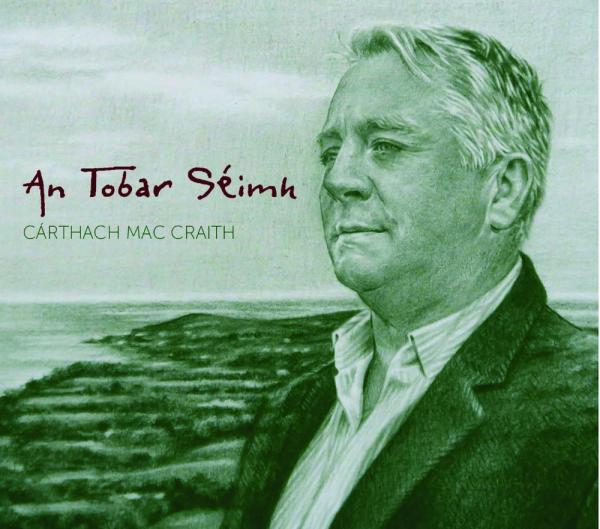February 27, 2019

“Why would you want to study Irish?” is a question that Irish language learners are often asked. What I like most about Irish Gaelic is how it gives you access to an amazingly beautiful, living culture and, in a deep way, access to Irish history and tradition.
The places where Irish is still the community language, known as Gaeltachtaí, are almost universally spectacularly beautiful, isolated rural areas where mountains and sea meet. Rinn Ó gCuanach, the Gaeltacht in southwest Co. Waterford, is no exception. I and other members of Cumann na Gaeilge i mBoston (Boston Irish Language Society) have attended summer courses there. A hundred Irish speakers and learners from as far away as Japan converge at Coláiste na Rinne (the College of Rinn) in August for classes and a conference.
Less than a century ago, the Gaeltacht region stretched from east Cork up to south Tipperary, and included a big chunk of Waterford. This is incredible, considering how the region was settled by waves of Vikings, Normans, and English planters for more than a thousand years. But today the Gaeltacht is restricted to two villages—An Rinn and An Sean Phobal (the Old Parish). Still, it is a vital and culturally rich community, thanks in part to the Irish learners from around the region who study at the college throughout the year or return periodically for cultural events, as if returning to a well with fine water to drink. Even more important are the families that have transmitted the language from generation to generation, an unbroken chain of tradition.
Last summer I met Carthach Mac Craith in a singing workshop at the college. Last fall Carthach put out his first CD of old-style (sean-nós) Gaelic songs, called An Tobar Séimh—The Fine Well, in the sense that the water it holds is fine, mild, or smooth. The CD has already won numerous awards. Mac Craith’s collection is a powerful rendition of the local Gaelic oral tradition, which is also the tradition of Ireland. Mac Craith’s voice is itself smooth and mild, with a powerful range. Three songs in the collection have not been recorded until now. The songs include “Éamonn an Chnoic,” Éamonn of the Hill. Éamonn Ó Riain was a Tipperary landowner who was a hero of the battles again British King William of Orange in the late 17th century. Following the defeat of Irish forces loyal to the Catholic King James II by Williamite forces in 1691, Britain implemented Anglo-Protestant minority rule in Ireland. Ó Riain and other Catholics were dispossessed of their land. Legend has it that, years later, a tax collector was trying to take a peasant woman’s cow when Ó Riain challenged the man, killed him, and then went on the run. For decades Éamonn roamed the hills of Tipperary leading a band of outlaws. He became a legend, not unlike Robin Hood, defending the poor peasantry against the cruelty of the landlords and the army. The first verse of the song goes (excuse the translation):
“Who is that outside with the urgent voice, pounding on my closed door?”
“I am Éamonn of the Hill, drowned, cold and wet, from endlessly traveling the mountains and glens.”
“My dearest one, what can I do with you, except cover you with the lap of my dress?
For the gunpowder is driving heavily at you, and we will both be obliterated.”
Another song, Seán Ó Duibhir an Ghleanna, describes another Tipperary landowner dispossessed of his land who joins the outlaws in the hills. In addition to decrying the destruction of the Gaelic order, the song laments the felling of the Irish forest and the destruction of nature for the British navy and industry:
It is my great sadness
That the shelter for my ears [the forest] has been cut,
The north wind numbing me,
And death in the sky.
While Irish history, for centuries, was one tragedy after another, many of the songs in Mac Craith’s collection are hopeful and upbeat. One example is the Gaelic revival song “Speak the Irish language with me,” which many Irish students learn in school:
Oh speak the Irish language with me
My heart’s love and my treasure
The language that my mother spoke with me
In green Ireland long ago
She is the melodious tongue of our ancestors
The sweetest sounding speech
Oh speak the Irish language with me
And dispel the sorry from my heart.
Mac Craith learned sean-nós songs from his grandmother, neighbors and close family friends, including the legendary Nioclás Toibín, who won the national Gaelic singing championship three years in a row. Carthach’s father, Nioclás Mac Craith, was a tireless advocate for Irish language and culture, recording one of the largest collections of songs from the region in the 1950s. Most songs on An Tobar Séimh are taken from Carthach’s father’s collection. Joining Carthach on some of the songs are his daughter Méin Nic Craith, who plays Liam Clancy’s concertina, and Carthach’s nephew Dónal Clancy, who plays guitar. Carthach is married to Liam Clancy’s daughter Siobhán.
I highly recommend this CD to anyone who loves Irish music and tradition. While the liner notes are only in Irish, you can find English translations to many of the songs online, although some, like “Ned of the Hill,” are completely different from the original Irish. Still, even for those without much Irish, it’s worth taking a drink from this fine well of our heritage.
The best way to get a copy of “An Tobar Séimh” is to message Carthach Mac Craith on Facebook.

